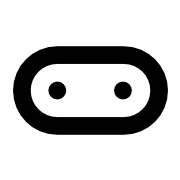Introduction to the 'For' Loop
The 'for' loop is a fundamental programming construct that allows you to run a block of code multiple times, based on a specified condition. It is particularly useful for iterating over arrays or performing repetitive tasks without writing redundant code. In this documentation, we will explore:
- Basic Syntax: Understand the structure of a 'for' loop with examples.
- Use Cases: Learn how to implement 'for' loops in various scenarios, such as counting, iterating through data, and more.
- Examples: Practical examples demonstrating how to use 'for' loops effectively in your programs.
Key Features
- Index Variable: Control the number of iterations using an index variable.
- Flexibility: Easily modify the loop to suit different programming needs.
- Integration: Use 'for' loops in conjunction with other programming constructs for more complex logic.
Use Cases
- Counting occurrences in a dataset.
- Displaying a sequence of numbers on a screen.
- Iterating through elements in an array or list.
This documentation serves as a guide for beginners and intermediate programmers looking to enhance their coding skills with loops.

